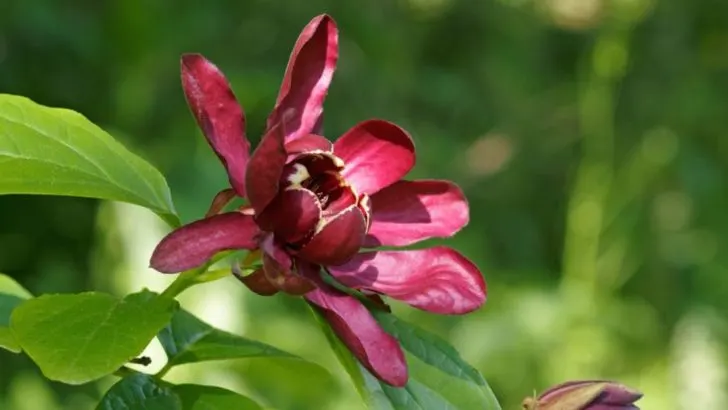Many invasive plants may look beautiful, but they can quickly take over your garden and harm native ecosystems. Instead of planting these aggressive species, consider these 20 stunning alternatives that offer the same beauty without the risk.
Virginia Bluebell
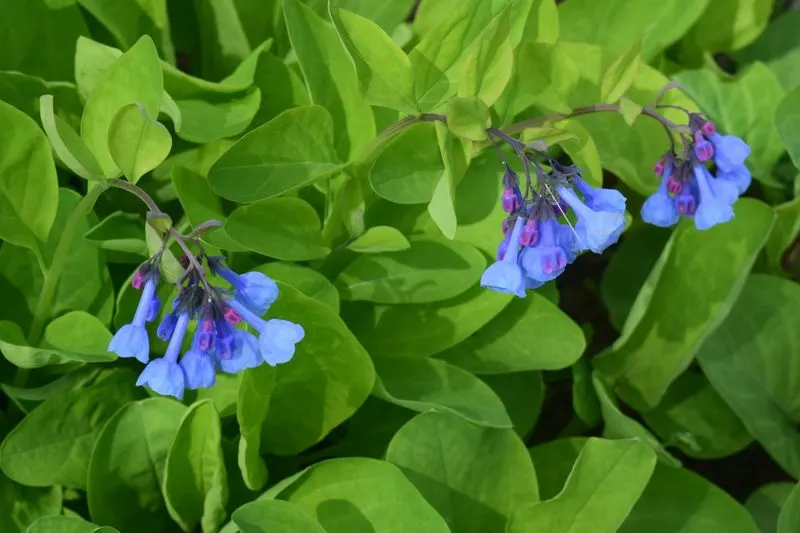
Known for its charming clusters of blue blossoms, Virginia Bluebell offers a graceful alternative to invasive bluebells. These perennials flourish in shaded areas, thriving in moist, well-drained soil. Their early spring blooms attract pollinators, ensuring your garden buzzes with life. Plant them among ferns or hostas for a harmonious woodland feel. Virginia Bluebells’ adaptability to various garden conditions makes them a versatile choice. Over time, they naturalize beautifully, adding a serene touch to your garden. With minimal maintenance required, they stand as a low-effort, high-reward option for gardeners.
Switchgrass
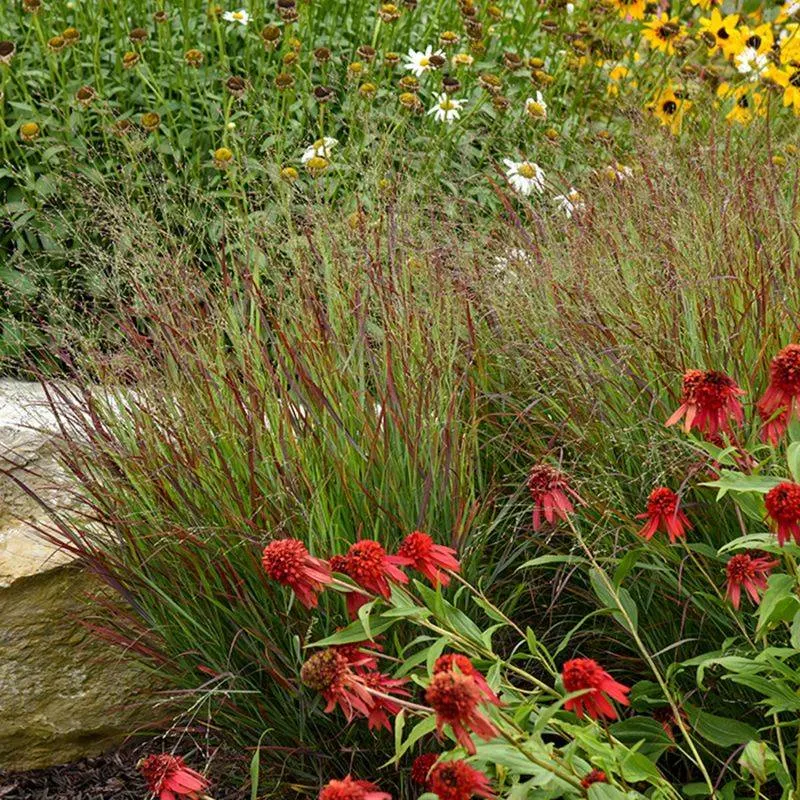
Switchgrass stands tall as a graceful alternative to invasive grasses. Its vibrant green blades shift to golden hues in fall, offering seasonal interest. This native grass thrives in diverse conditions, from dry to moist soils, and requires little care once established. It serves as an excellent habitat for wildlife, supporting biodiversity in your garden. By replacing invasive grasses with Switchgrass, you promote a balanced ecosystem while enjoying its elegant presence. Its towering height and feathery seed heads add texture and movement, creating dynamic visuals throughout the seasons.
Butterfly Weed
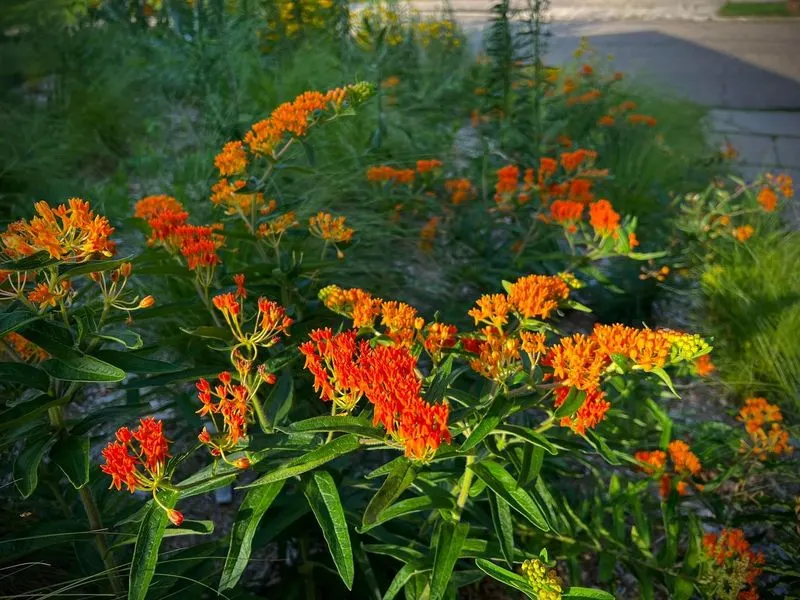
Bring vivid orange hues to your garden with Butterfly Weed, an excellent alternative to invasive species. Its bright blooms are a magnet for butterflies and bees, enhancing pollinator activity. This drought-tolerant perennial thrives in sunny spots, requiring minimal watering. Its deep taproot means it’s tough and long-lived, providing season-long color. Butterfly Weed pairs well with grasses and other perennials, creating vibrant displays. Its ability to adapt to different garden conditions makes it a practical choice for eco-conscious gardeners. Enjoy the lively garden atmosphere it creates without invasive drawbacks.
Purple Coneflower
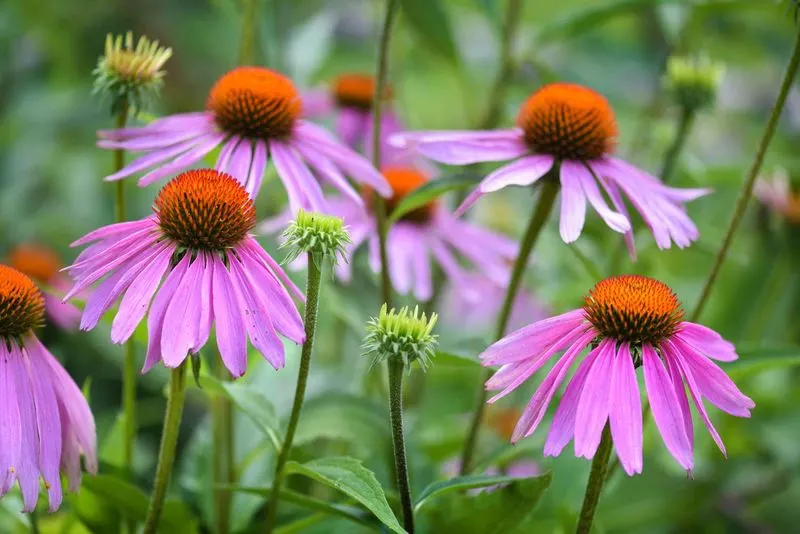
Purple Coneflower, with its striking pink petals and prominent center cones, presents a captivating alternative. Perfect for sunny gardens, this resilient perennial thrives in well-drained soil. Its blooms attract bees and butterflies, supporting garden biodiversity. Pair with grasses or other native perennials for a prairie-inspired look. Beyond beauty, it offers medicinal benefits, often used in teas and herbal remedies. This combination of aesthetics and utility ensures Purple Coneflower remains a garden favorite. As seasons change, the seed heads provide food for birds, adding another dimension to its allure.
Wild Geranium
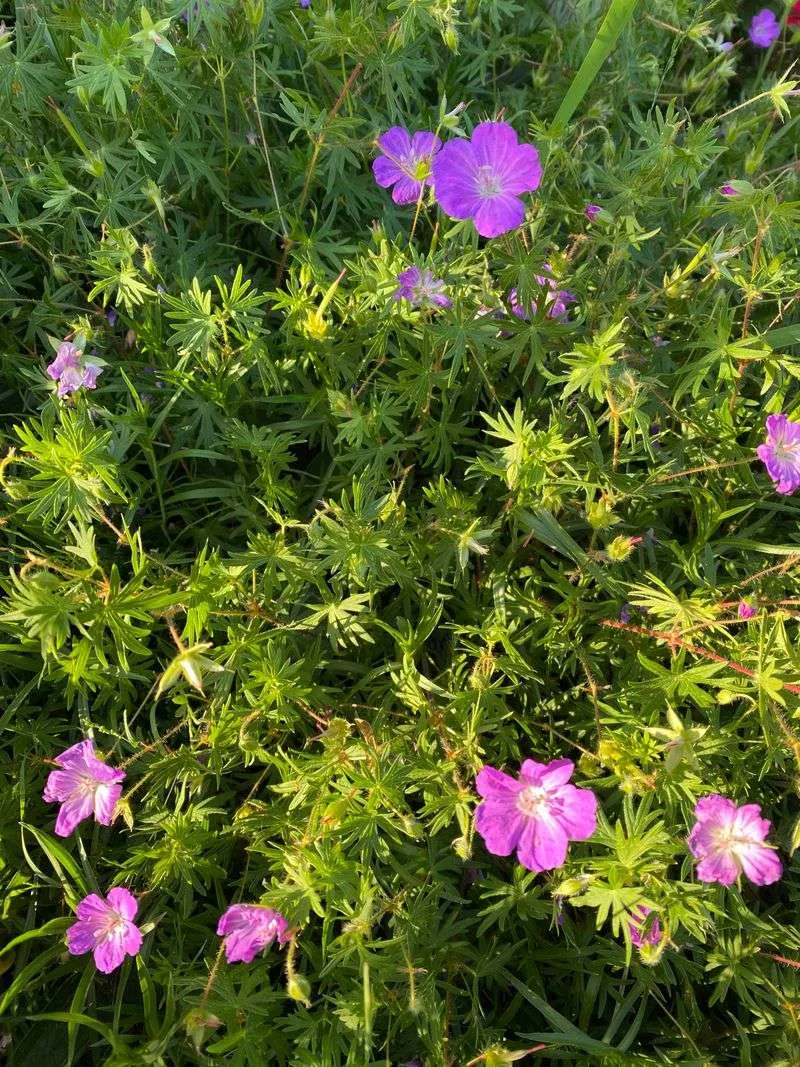
Wild Geranium offers a gentle charm as an alternative to more aggressive ground covers. These perennials grace gardens with their pink-purple blooms in spring and summer. Preferring partial shade, they make excellent companions for shady garden spots. Their lobed leaves provide appealing ground cover texture, filling gaps between taller plants. Wild Geraniums attract beneficial insects, contributing to a balanced garden ecosystem. They require minimal maintenance, ideal for gardeners seeking low-effort beauty. Their adaptability and subtle elegance make them a versatile choice for enhancing diverse garden styles.
New England Aster
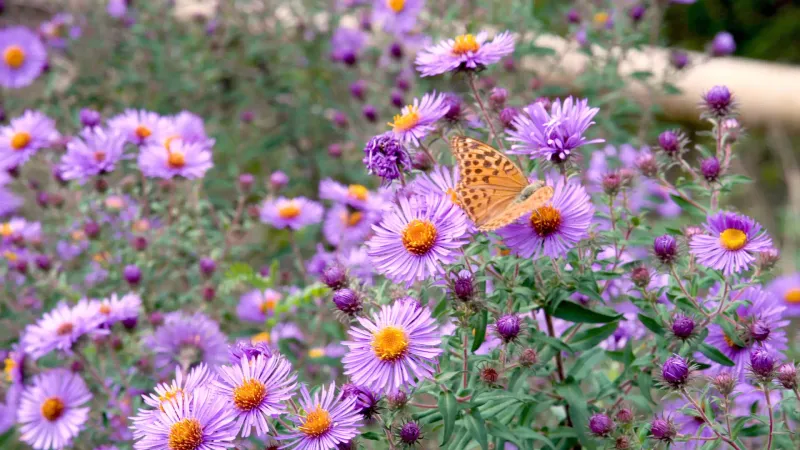
New England Aster bursts with vibrant purple blooms, offering a robust alternative to invasives. These perennials thrive in sunny, well-drained locations and are a magnet for pollinators. Their late-season flowers ensure continuous garden color into autumn. Pair with goldenrods for contrasting hues and extended interest. Beyond aesthetics, they support local wildlife, providing nectar for bees and butterflies. Once established, New England Asters require little care, making them a practical, beautiful choice. Their towering stems and clustered blossoms create dynamic vertical interest, enhancing garden landscapes.
Canadian Anemone
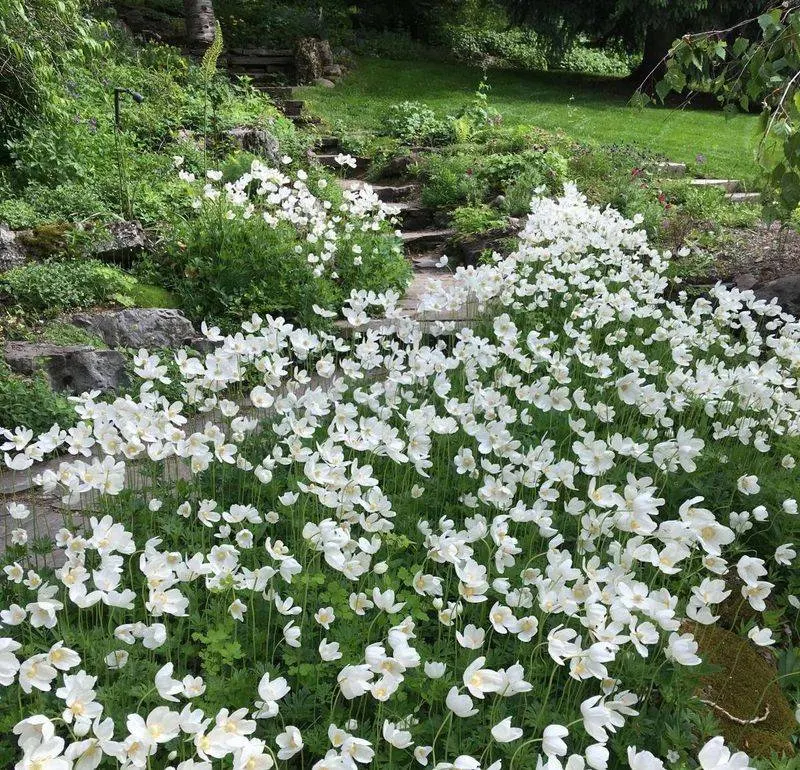
Canadian Anemone offers a delicate alternative with its pristine white blooms. These perennials thrive in moist, well-drained soils, ideal for shaded or semi-shaded areas. Their spreading habit creates a lush ground cover, filling spaces with elegance. Despite their delicate look, Canadian Anemones are hardy and easy to grow, making them suitable for novice gardeners. They pair well with ferns or hostas, adding texture and depth. Their blooms attract pollinators, enhancing garden ecosystems. Canadian Anemones’ ability to adapt to various conditions ensures they remain a garden staple, providing understated beauty.
Joe Pye Weed
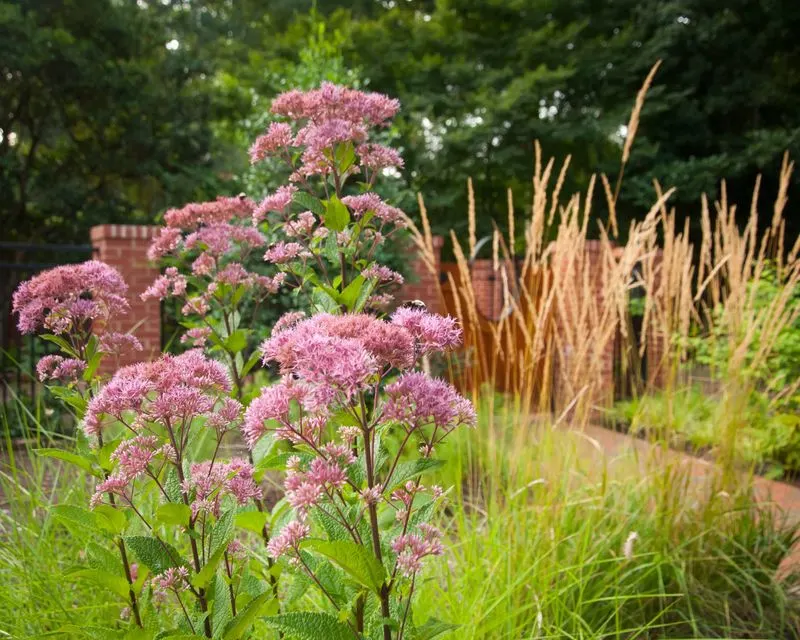
Tall and majestic, Joe Pye Weed stands as a striking alternative to invasive wetland plants. Its large pink flower clusters attract butterflies, adding movement and life to gardens. This native perennial thrives in moist soils, perfect for rain gardens or water edges. Its towering height makes it a natural focal point, drawing the eye upward. Beyond beauty, Joe Pye Weed supports local ecosystems by providing habitat and nectar. Its robust nature ensures it’s low-maintenance once established, ideal for gardeners seeking impactful yet sustainable options. Enjoy its towering presence without the invasive worries.
Cardinal Flower
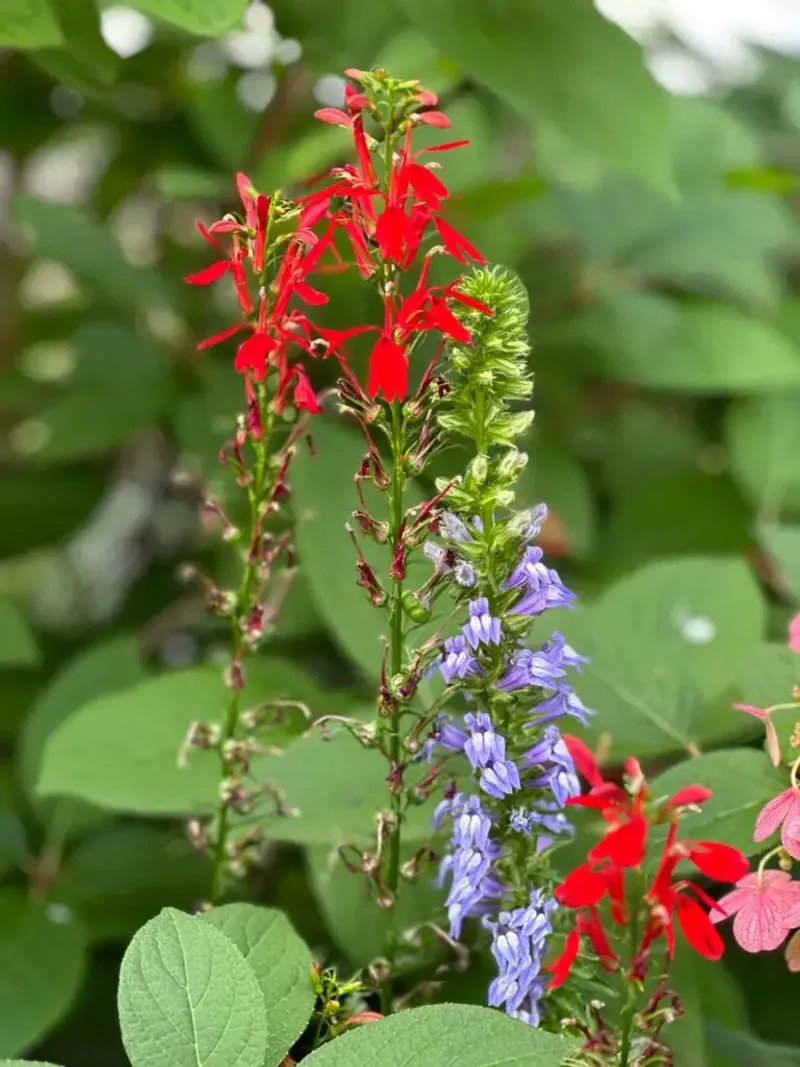
Cardinal Flower captivates with its brilliant red blooms, standing as a vivid alternative to invasives. Perfect for damp spots, it thrives in moist, rich soils. Its striking flowers are a favorite among hummingbirds, contributing to a lively garden atmosphere. Cardinal Flower’s vertical growth adds structure and height, making it a versatile addition. Pair with ferns or grasses for a naturalistic look. Despite its delicate appearance, it’s a hardy choice, well-suited for various climates. Its ability to attract pollinators and enhance biodiversity makes it a valuable garden ally, offering beauty and ecological benefits.
Serviceberry
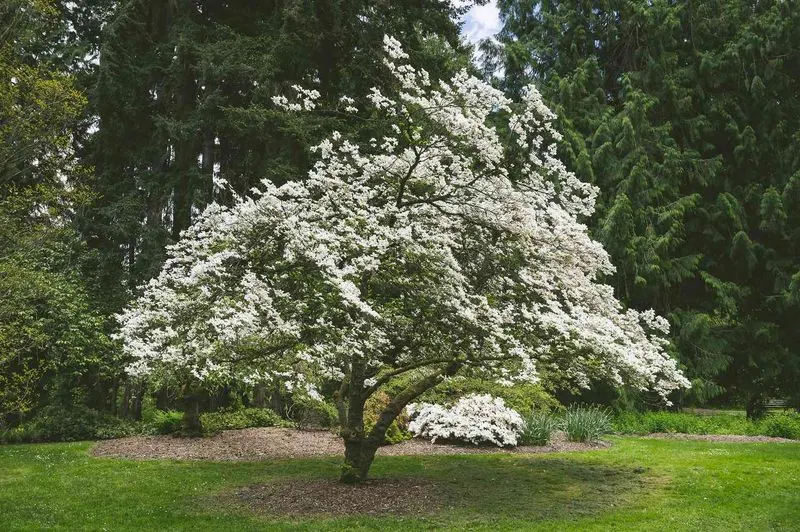
Serviceberry provides year-round interest as a tree alternative to invasive shrubs. Its spring blossoms give way to edible berries, attracting birds and wildlife. This small tree thrives in well-drained soils, adaptable to various garden settings. Beyond beauty, it offers ecological value by supporting native fauna. Its fall foliage transitions to brilliant orange-red, adding seasonal dynamism. Serviceberry’s manageable size suits smaller gardens, providing ornamental and practical benefits. Use as a focal point or as part of a mixed border. Enjoy its multi-seasonal appeal and ecological contributions without invasive concerns.
Black-Eyed Susan
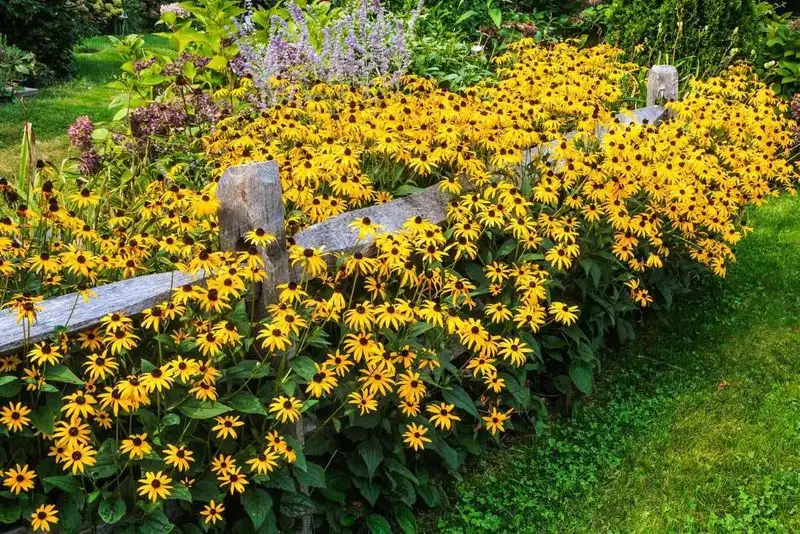
Brighten your garden with Black-Eyed Susan, a cheerful alternative to invasives. Its sunny yellow blooms and dark centers create visual interest, attracting bees and butterflies. This resilient perennial thrives in full sun and well-drained soil, requiring minimal care. Its long blooming period ensures continuous color through summer and into fall. Pair with purple coneflowers or ornamental grasses for striking contrasts. Black-Eyed Susan’s adaptability and hardiness make it a garden favorite, providing color and ecological benefits. Their seed heads offer food for birds, adding wildlife interest, creating a vibrant, dynamic garden.
Wild Lupine
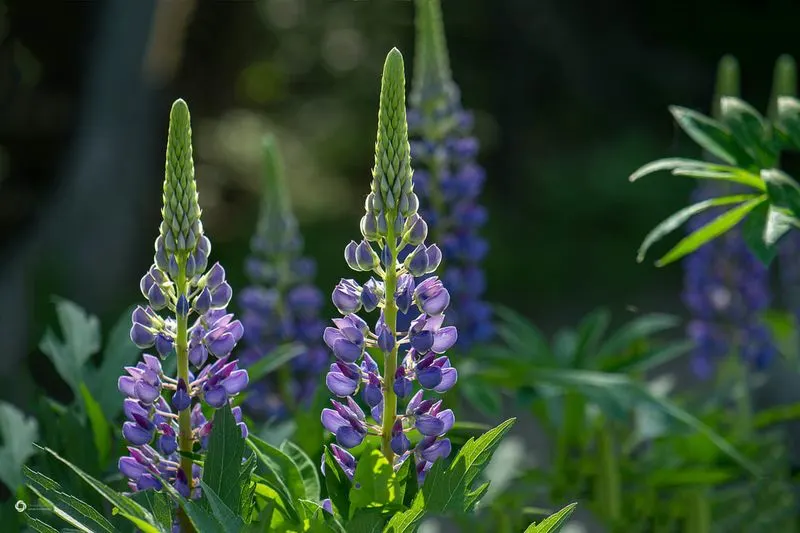
Wild Lupine dazzles with tall spikes of colorful blooms, offering a captivating alternative. This perennial thrives in sandy or well-drained soils, perfect for sunny garden spots. Its flowers attract bees and butterflies, enhancing pollinator presence. Wild Lupine’s unique foliage adds texture, complementing its vibrant blooms. Beyond beauty, it supports local ecosystems, providing habitat and food for native species. Its adaptability to various soil conditions makes it a practical choice for diverse gardens. Enjoy its dramatic flower spikes and ecological benefits, enriching your garden without the invasive impact.
Spicebush
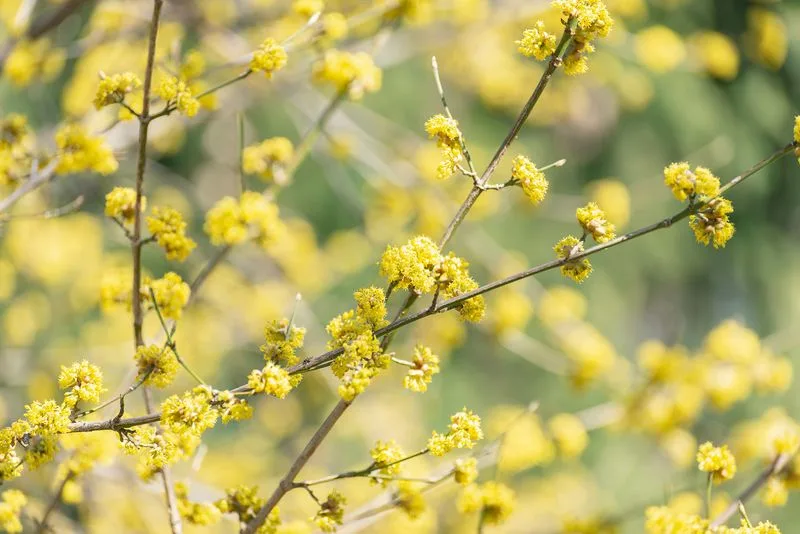
Spicebush offers aromatic charm as an alternative to invasive shrubs. Its fragrant leaves and yellow spring flowers attract early pollinators. In fall, red berries provide food for birds, enhancing biodiversity. This shrub thrives in moist, well-drained soil, preferring partial shade. Spicebush’s adaptability to woodland settings makes it ideal for naturalistic gardens. Beyond aesthetics, its leaves and berries are used in teas and culinary applications, adding utility. Its ability to support ecosystems while offering visual and sensory appeal makes Spicebush a valuable garden addition, combining beauty with ecological function.
Wild Columbine
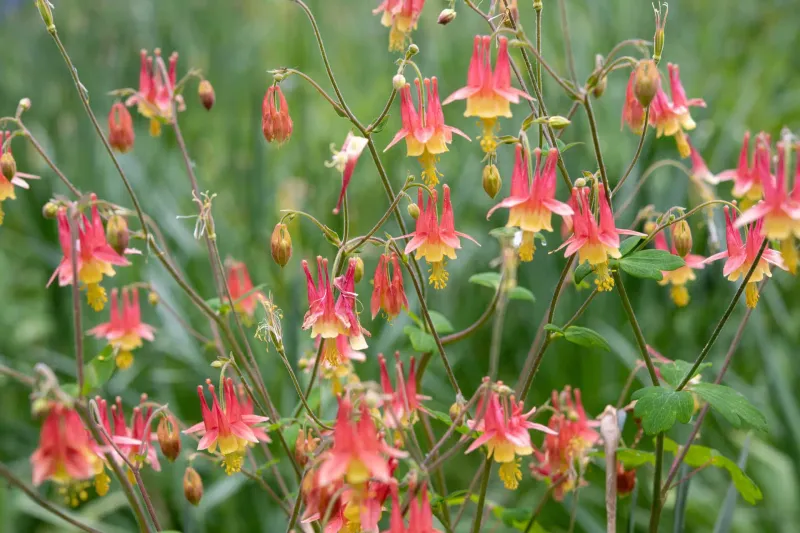
Wild Columbine enchants with its red and yellow nodding flowers, serving as a whimsical alternative. This perennial thrives in shaded, well-drained areas, perfect for woodland gardens. Its unique blooms attract hummingbirds, adding dynamic movement. Wild Columbine’s fern-like foliage offers texture, complementing other shade-loving plants. Despite its delicate appearance, it’s a hardy choice adaptable to various conditions. Plant with ferns or astilbes for a cohesive look. Its ability to attract pollinators and blend into natural settings makes it a versatile and valuable addition, providing color and life to shaded areas.
American Holly
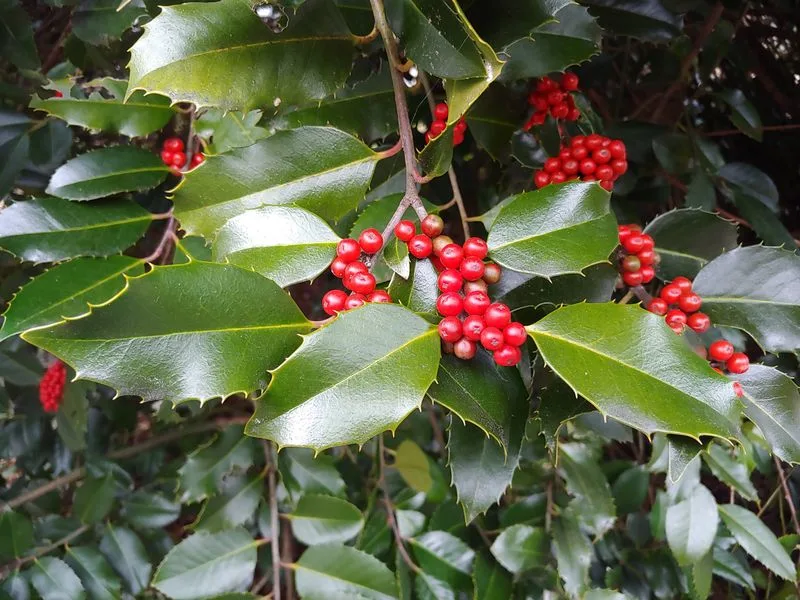
American Holly stands as a festive alternative to invasive shrubs. Its glossy green leaves and red berries provide year-round visual interest. This tree thrives in well-drained soils, adaptable to both sunny and shaded areas. Its berries attract birds, enhancing garden biodiversity. American Holly’s dense foliage offers privacy, making it suitable for hedges. Beyond beauty, its wood is used in crafts, adding utility. As a native species, it supports local ecosystems, providing ecological benefits. Plant as a standalone feature or as part of a mixed border, enjoying its festive charm and ecological contributions.
Sweetshrub
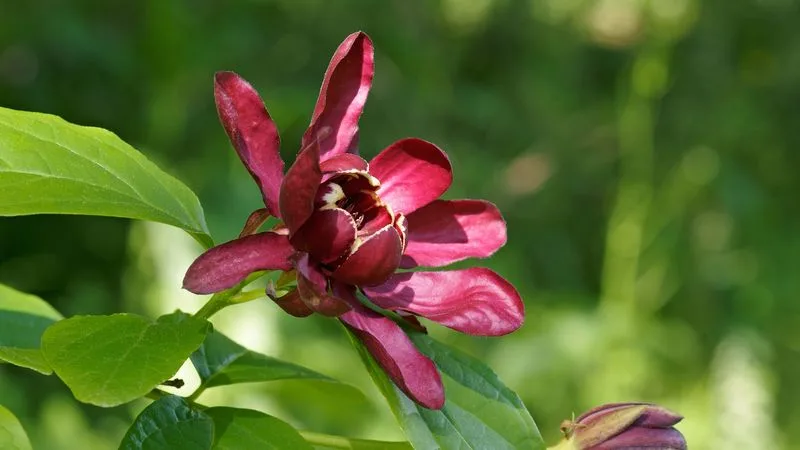
Sweetshrub delights with its fragrant maroon flowers, offering a sensory-rich alternative. This shrub thrives in well-drained, fertile soil, preferring partial to full sun. Its unique blooms fill gardens with a sweet scent, attracting pollinators. Sweetshrub’s adaptability to various conditions makes it a versatile choice for diverse garden settings. Beyond beauty, its foliage provides habitat for native wildlife, supporting biodiversity. Use as a specimen plant or in mixed borders, where its fragrance can be appreciated. Sweetshrub’s combination of sensory appeal and ecological benefits ensures it remains a cherished garden feature.
Eastern Redbud
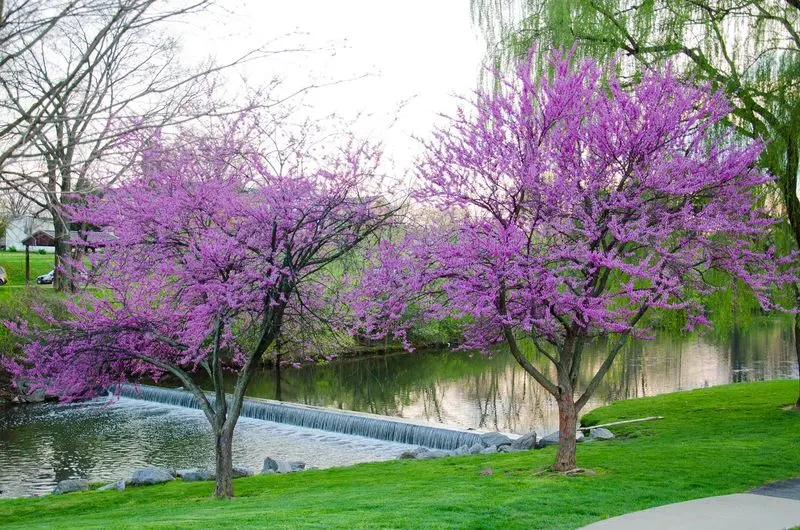
Eastern Redbud captivates with its pink spring blooms, providing a colorful alternative. This small tree thrives in well-drained soils, suitable for sunny or partially shaded areas. Its heart-shaped leaves transition to yellow in fall, offering seasonal interest. Beyond aesthetics, it supports pollinators, attracting bees in early spring. Eastern Redbud’s manageable size makes it ideal for smaller gardens, providing ornamental and ecological value. Use as a focal point or in naturalistic plantings. Enjoy its vibrant blooms and wildlife support, enhancing your garden with color and life without invasive concerns.
Blazing Star
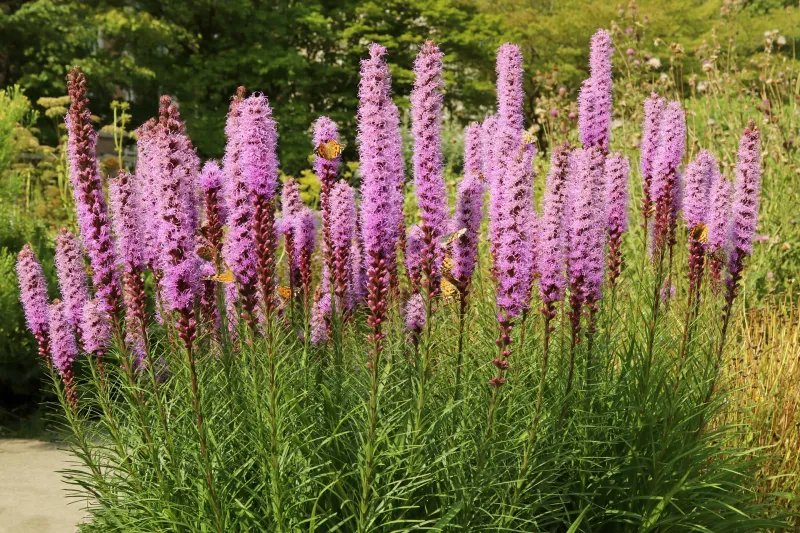
Blazing Star adds height and drama with its tall purple flower spikes. This perennial thrives in well-drained soils, perfect for sunny gardens. Its striking blooms attract butterflies and bees, enhancing pollinator activity. Blazing Star’s vertical form adds architectural interest, complementing grasses and other perennials. Beyond beauty, it supports wildlife, providing nectar and habitat. Its adaptability to various conditions makes it a practical choice for diverse garden landscapes. Plant in clusters for impact, enjoying its vibrant display and ecological benefits. With minimal care required, it’s a rewarding addition to any garden.
Oakleaf Hydrangea
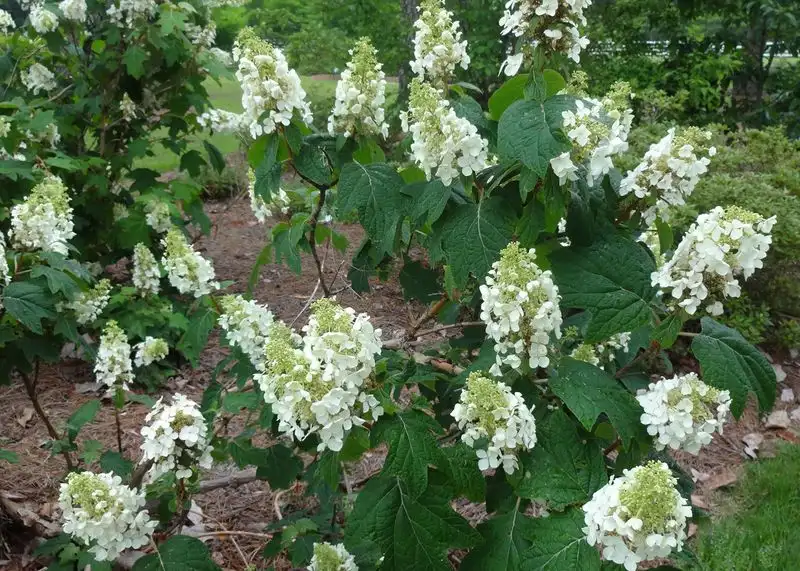
Oakleaf Hydrangea enchants with its large, cone-shaped blooms, serving as a striking alternative. This shrub thrives in well-drained, shaded areas, offering year-round interest. Its white flowers transition to pink, providing seasonal color shifts. Oakleaf Hydrangea’s foliage turns deep red in fall, adding another dimension. Beyond beauty, it offers ecological benefits, supporting pollinators and providing habitat. Its adaptable nature makes it suitable for various garden styles, from formal to naturalistic. Plant as a focal point or in mixed borders, enjoying its visual appeal and ecological contributions.
Creeping Phlox
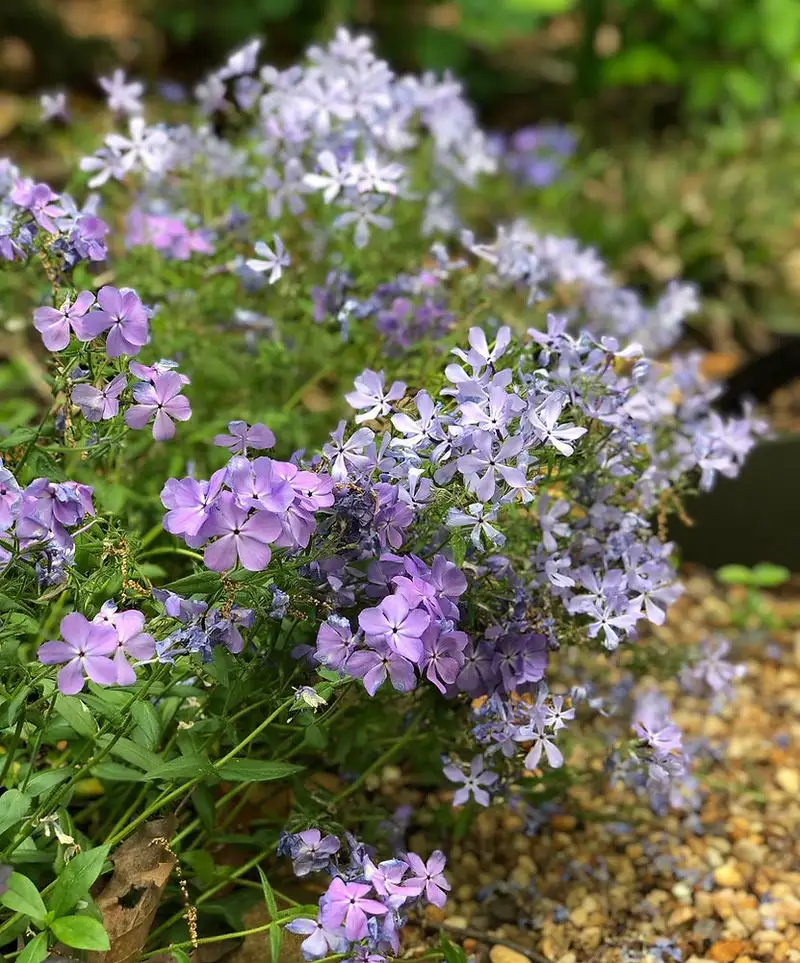
Creeping Phlox creates colorful ground cover with its vibrant blooms. Ideal for sunny spots, this perennial thrives in well-drained soil. Its flowers attract butterflies, adding life to garden borders. Creeping Phlox’s spreading habit provides excellent coverage, filling spaces with color. Use to soften edges or in rock gardens, where its cascading blooms can be appreciated. Despite its delicate appearance, it’s a hardy choice, requiring minimal maintenance. Its ability to attract pollinators and provide visual interest makes it a popular garden choice, offering beauty and ecological benefits.

